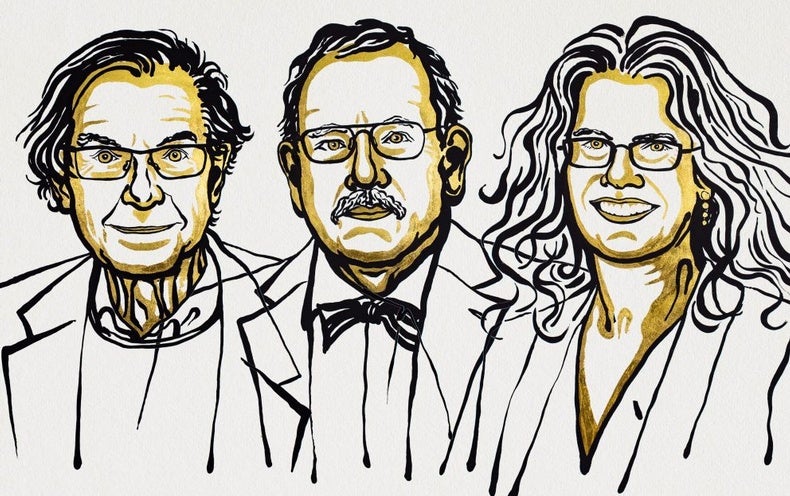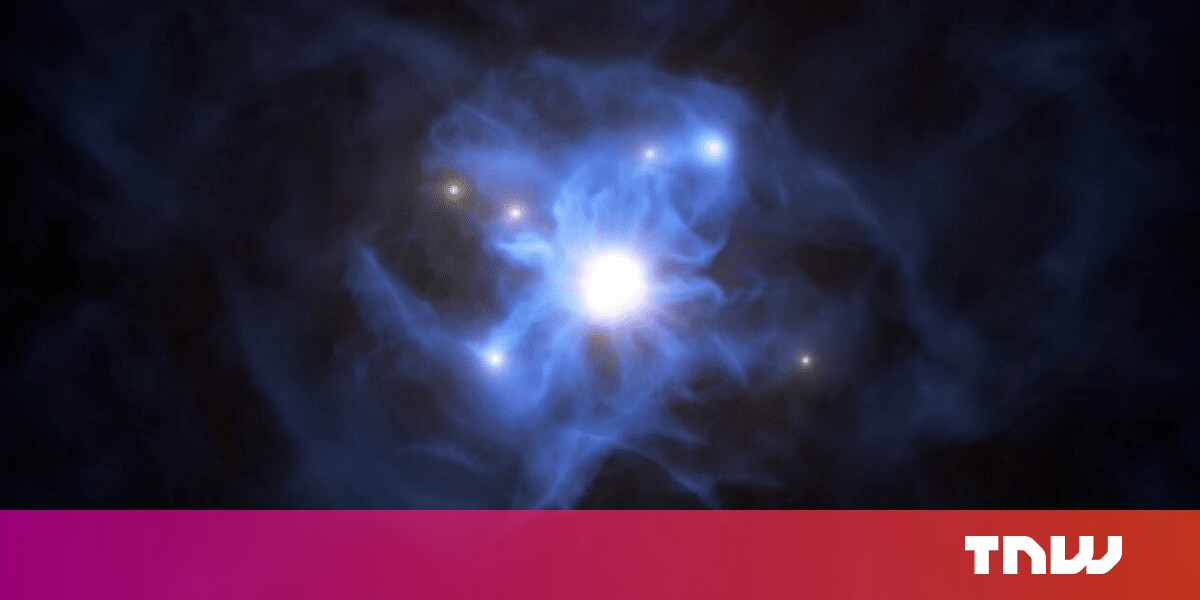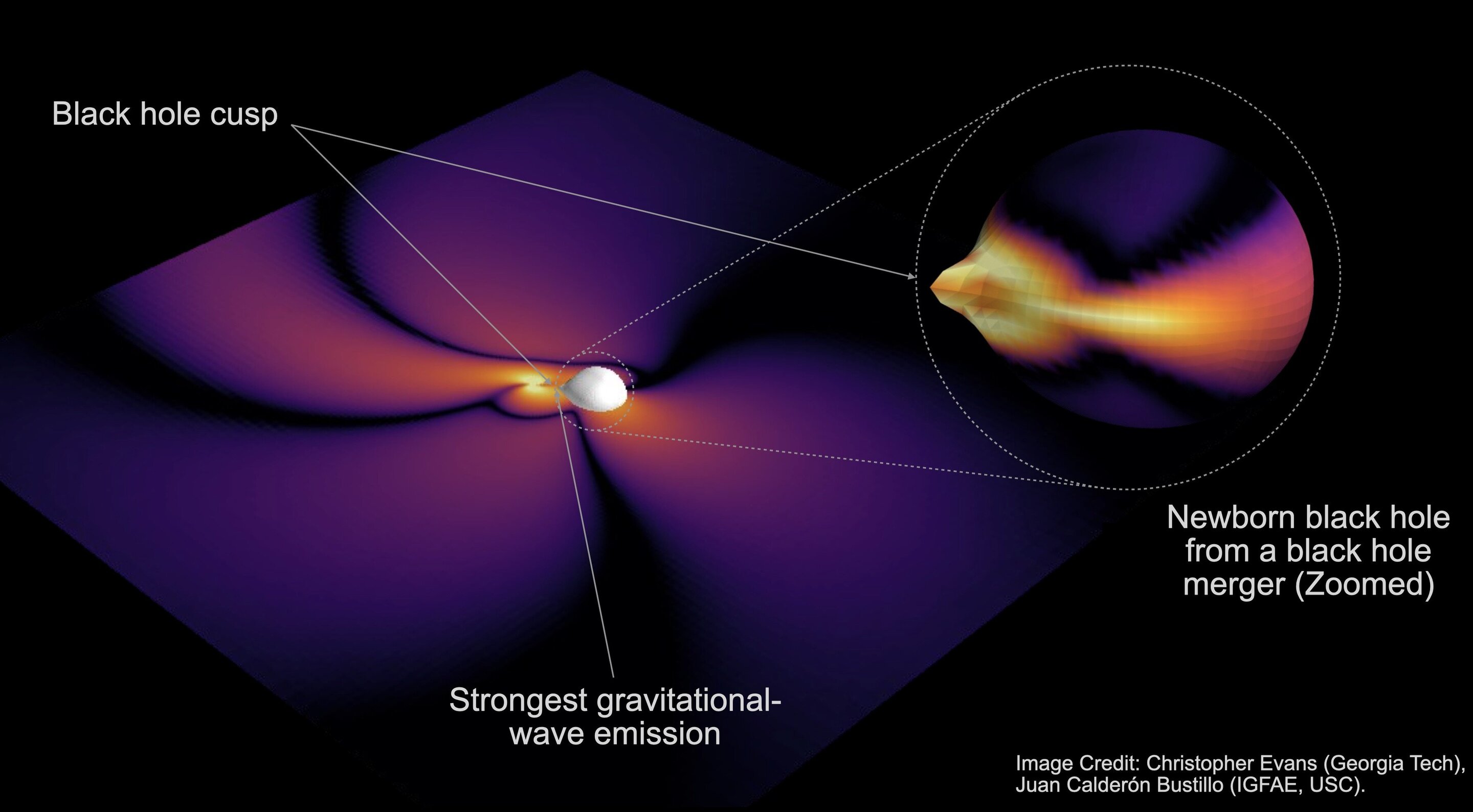
This year’s Nobel Prize in Physics was awarded to three scientists for their work on black holes. British cosmologist Roger Penrose will receive half of the prize, with the remaining half split between German astrophysicist Reinhard Genzel and American astrophysicist Andrea Ghez. Ghez is only the fourth woman in history to receive the venerable physics prize.
“This year’s prize is about the darkest secrets of the universe,” said Göran K. Hansson, secretary-general of the Royal Swedish Academy of Sciences, at a press event. The academy recognized Penrose for his “discovery that black hole formation is a robust prediction of the general theory of relativity,” Hansson added, while Ghez and Genzel were awarded “for the discovery of a supermassive compact object at the center of our galaxy.”
Other things to check out:
First photo of a black hole supports Einstein's theory of relativity - CNN

(CNN) The first image of a black hole , captured in 2019, has revealed more support for Albert Einstein's theory of general relativity. The new finding has suggested his theory is now 500 times harder to beat.
6 galactic galaxies orbiting a black hole could help answer a cosmic mystery

ESOAstronomers at the Very Large Telescope (VLT) recently found six galaxies orbiting a black hole in the ancient Universe. The galaxies orbiting this supermassive black hole (SMBH) are seen as they appeared when the Universe was just 900 million years old. This collection of galaxies, centered around the quasar SDSS J1030+0524, is the oldest, closest galactic cluster ever seen orbiting a supermassive black hole.
Supermassive b lack holes are found near the center of every galaxy, including the Milky Way . Those galaxies containing extremely energetic black holes can come alight as quasars.
The black hole always chirps twice: Scientists find clues to decipher the shape of black holes

Although colliding black holes do not produce light, astronomers can observe the detected gravitational waves they create—ripples in the fabric of space and time. Scientists speculate that, after a collision, the behavior of the remnant black hole is key to understanding gravity and should be encoded in the emitted gravitational waves.
In the article published in Communications Physics , the scientists, led by OzGrav alumnus Prof. Juan Calderón Bustillo, reports how gravitational waves encode the shape of merging black holes as they settle into their final form.
Were you following this:
What Black Holes Bring to the Galaxy - The Atlantic

The first picture ever captured of a black hole, one situated in the center of another galaxy, was pretty blurry. Seen in silhouette, it appeared fuzzy, as did the ring of hot gas surrounding it. The reaction of the public did not necessarily match the unalloyed joy of astronomers accustomed to extracting cosmic wonders from lines in a graph. To anyone more familiar with black holes from epic space films, this one mostly looked like a flame-glazed donut.
Black holes are among the most mysterious phenomena in the universe. Forged from the cores of dead stars, they are so dense that nothing can escape their gravitational pull, not even light, which renders them invisible. Entire stars, once luminous, can be extinguished if they cross a black hole's boundary, and pass the point of no return.
The black hole always chirps twice: New clues deciphering the shape of black holes | EurekAlert!

Black holes are one the most fascinating objects in the Universe. At their surface, known as the 'event horizon', gravity is so strong that not even light can escape from them.
Although colliding black holes do not produce light, astronomers can observe the detected gravitational waves--ripples in the fabric of space and time--that bounce off them. Scientists speculate that, after a collision, the behaviour of the remnant black hole is key to understanding gravity and should be encoded in the emitted gravitational waves.
Black hole study narrows leeway for tweaks to Einstein's gravity theory - AZPM

Simulation of M87 black hole showing bright blue thin ring — the edge of the black hole shadow. L. Medeiros (IAS); BH PIRE (UArizona)
The theory of general relativity remains hugely successful, but it leaves open some enduring questions surrounding the origins of dark matter, the acceleration of the universe and how to finally marry relativity to quantum mechanics.
Scientists hope to plug these holes by tweaking Einstein's theory, but their leeway just grew a lot smaller, thanks to research published in the journal Physical Review Letters.
Black hole mergers may emit double chirps, giving us clues about their shape | Ars Technica

Physicists hunt for merging black holes and other similar cosmic events through the detection of gravitational waves, from which they can glean valuable information, such as the mass of both the precursor black holes and the final, larger black hole that results from the merger.
General relativity predicts that two merging black holes should give off powerful gravitational waves—ripples in the fabric of spacetime so faint that they're very difficult to detect. The waveforms of those signals serve as an audio fingerprint of the two black holes spiraling inward toward each other and merging in a massive collision event, sending powerful shock waves across spacetime. Physicists look for a telltale "chirp" pattern in the data as the two black holes collide.
Happening on Twitter
I'm just so tired, so terribly tired, so utterly, totally 100% exhausted of thinking about him. I want to start thi… https://t.co/vAvMFnl7w5 stevesilberman (from San Francisco) Wed Oct 07 17:11:55 +0000 2020
#Today Chandra is searching for a central #BlackHole in NGC 205. NGC 205 is a satellite galaxy of Andromeda (M31) a… https://t.co/RGpPlguu2y chandraxray (from In orbit) Wed Oct 07 14:04:32 +0000 2020
Black holes normally have masses of 10s of Suns. At the center of our galaxy however, a super massive black hole si… https://t.co/JQpIhsCTQA physicsJ (from Tokyo, Japan) Wed Oct 07 16:53:20 +0000 2020
Astronomer Andrea Ghez has become the fourth woman to be awarded the Nobel Prize in Physics for her work on black h… https://t.co/4WgIeCQI7I camanpour (from London) Wed Oct 07 19:28:27 +0000 2020
No comments:
Post a Comment